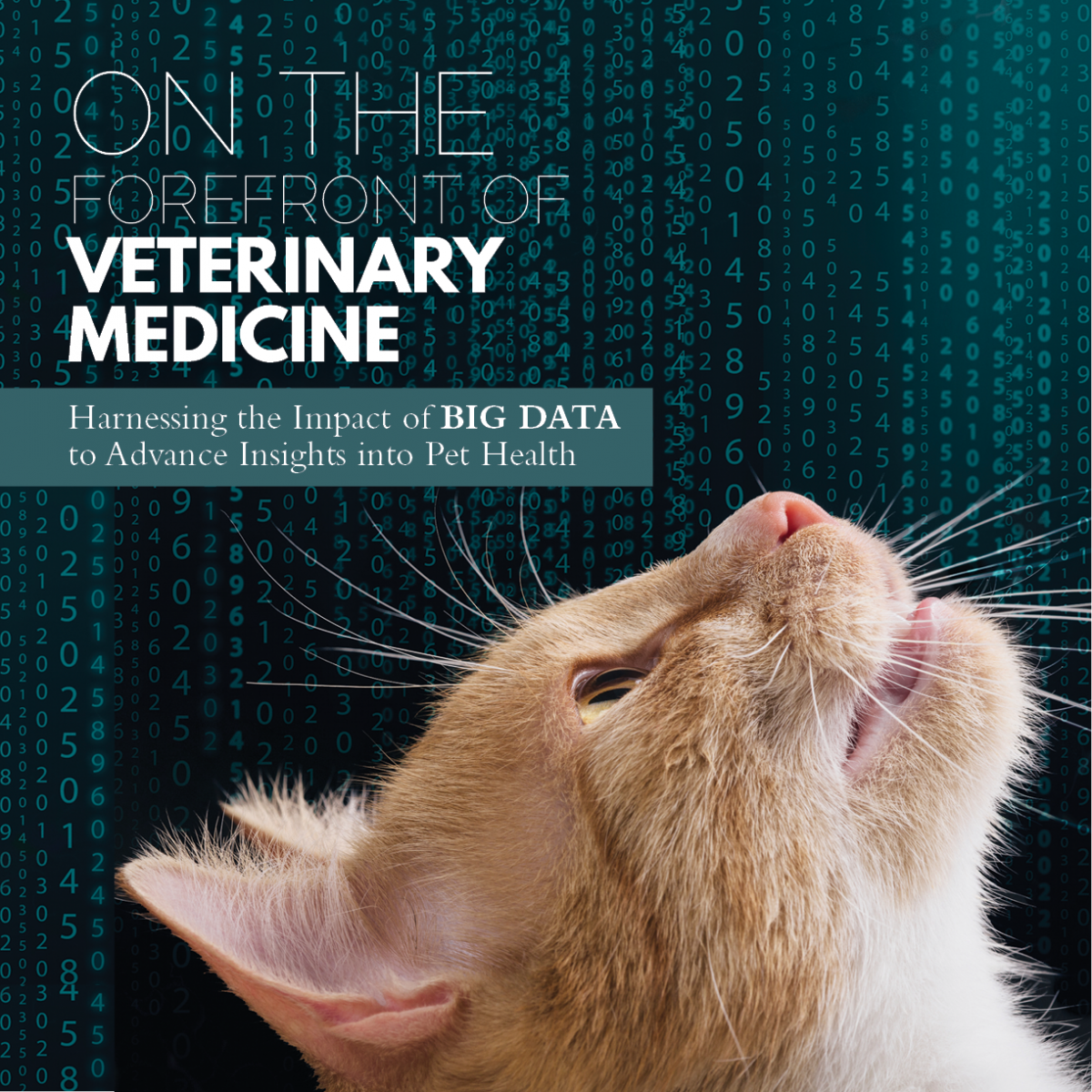What if there was a way to predict and respond to natural disasters? What if you could help track climate change by documenting when your skating rink freezes from your own backyard? What if blockchain, the intricate technology behind the cryptocurrency Bitcoin and a powerful tool for efficiency, could regulate the complex global food supply system?
 These are only a few of the applications of the use of big data in our everyday lives, and all these examples are currently being developed across the world today. From safe food production to improved animal health, researchers at the University of Guelph are also working with big data, enabling people to make more informed decision-making at a speed that has never been possible before.
These are only a few of the applications of the use of big data in our everyday lives, and all these examples are currently being developed across the world today. From safe food production to improved animal health, researchers at the University of Guelph are also working with big data, enabling people to make more informed decision-making at a speed that has never been possible before.
Big data involve extremely large data sets that may be analyzed using artificial intelligence (AI), such as machine learning, to aggregate and identify patterns and trends and it is revolutionizing many industries. Big data has been dubbed as “the new oil” and many believe that our future may in fact depend on it.
Dr. Theresa Bernardo, a professor in the department of Population Medicine at the Ontario Veterinary College, is the IDEXX Chair in Emerging Technologies and Bond-Centred Animal Healthcare. Her team is currently using big data to look at how we can accurately predict the average weight of cats over their lifetimes to allow for a more personalized model of medicine and preventive approach to healthcare.
In the veterinary world, there is already a great deal of data used as a preventive tool within agriculture for production animals such as cattle and sheep, but we haven’t yet made full use of population data to prevent or predict illness in companion animals.
Instrumental in Bernardo’s quest to find answers is IDEXX Laboratories, Inc., a leader in pet healthcare innovation, serving veterinarians around the world in 175 countries with a broad range of diagnostic and information technology-based products and services. IDEXX has provided Bernardo’s team with health data from 19.4 million cats collected over a 35-year period, from 1981 to 2016. Statistics include age, gender, breed, weight and reproductive status. Having access to this amount of data for cats is unprecedented and it has helped her team generate models to be able to accurately predict the average weight of cats as they age.
“There is a unique opportunity to combine this information with diagnostic test data and gain valuable insights into the interactions between weight and health as well as potential interventions to increase the number of years of healthy life for our pets,” she says. She also suggests that discussions about body weight throughout a pet’s lifetime could be a useful gateway to engage more cat owners in the health of their pets.
“A pet’s weight is an easy point of entry into data- driven animal wellness,” Bernardo explains. “The monitoring of body weight is an important indicator of health in both humans and animals. It is a data point that is commonly collected within each medical appointment and it is accessible and simple to monitor at home.”
Bernardo’s team has been focused on looking at patterns of weight gain and loss over the lifetime of a cat. Questions her team seek to answer included: when do cats become skinny? What is average weight loss over time? What is the projected average weight for a cat based on breed, gender and reproductive status? Since most animals die from chronic diseases versus infectious diseases, Bernardo hopes their work can help pet owners understand what weight gain and loss looks like over a cat’s lifetime and what we can predict from big data about their current and future health on an individual level. Next steps will be to look at the potential impact technology, such as sensors and automated feeders, may have in achieving healthy weights for cats and strengthening the human-animal bond.
“Thanks to the information IDEXX has provided, we now know that cats tend to lose weight between six and 10 years of age, depending on their breed, gender and whether or not they have been neutered or spayed.”
OVC is uniquely positioned because of their relationship with IDEXX and opportunities are evolving as technology drives change.
“Our team works collaboratively across campus at the University of Guelph with world-caliber experts who specialize in computer science and machine learning to drill down on what we can learn from this data and map out trends.”
Bernardo’s work sets the stage for a more personalized model of veterinary medicine. An equation calculator or algorithm for cats is in the works and an upcoming scientific publication will share their findings with veterinarians in general practice, and by extension, to pet owners as well.
“Technology is a tool for both veterinarians and pet owners,” says Bernardo. “We are making important advances, both in clinical outcomes that can improve and lengthen the lives of pets, and in how veterinary students and practicing veterinarians can access, interpret and use big data to improve their patients’ health.”
Dr. Theresa Bernardo is an international leader in addressing complex health problems through technology and has experience using emerging technologies to save lives in disasters, including the worldwide flu epidemic (H1N1) and Haiti earthquake. Her work at the Ontario Veterinary College (OVC) aims to improve the health and well-being of animals, their caregivers and communities.
Read more in the fall / winter issue of Best Friends Magazine.

